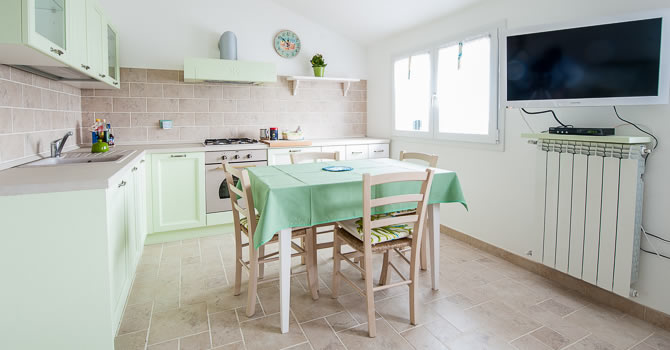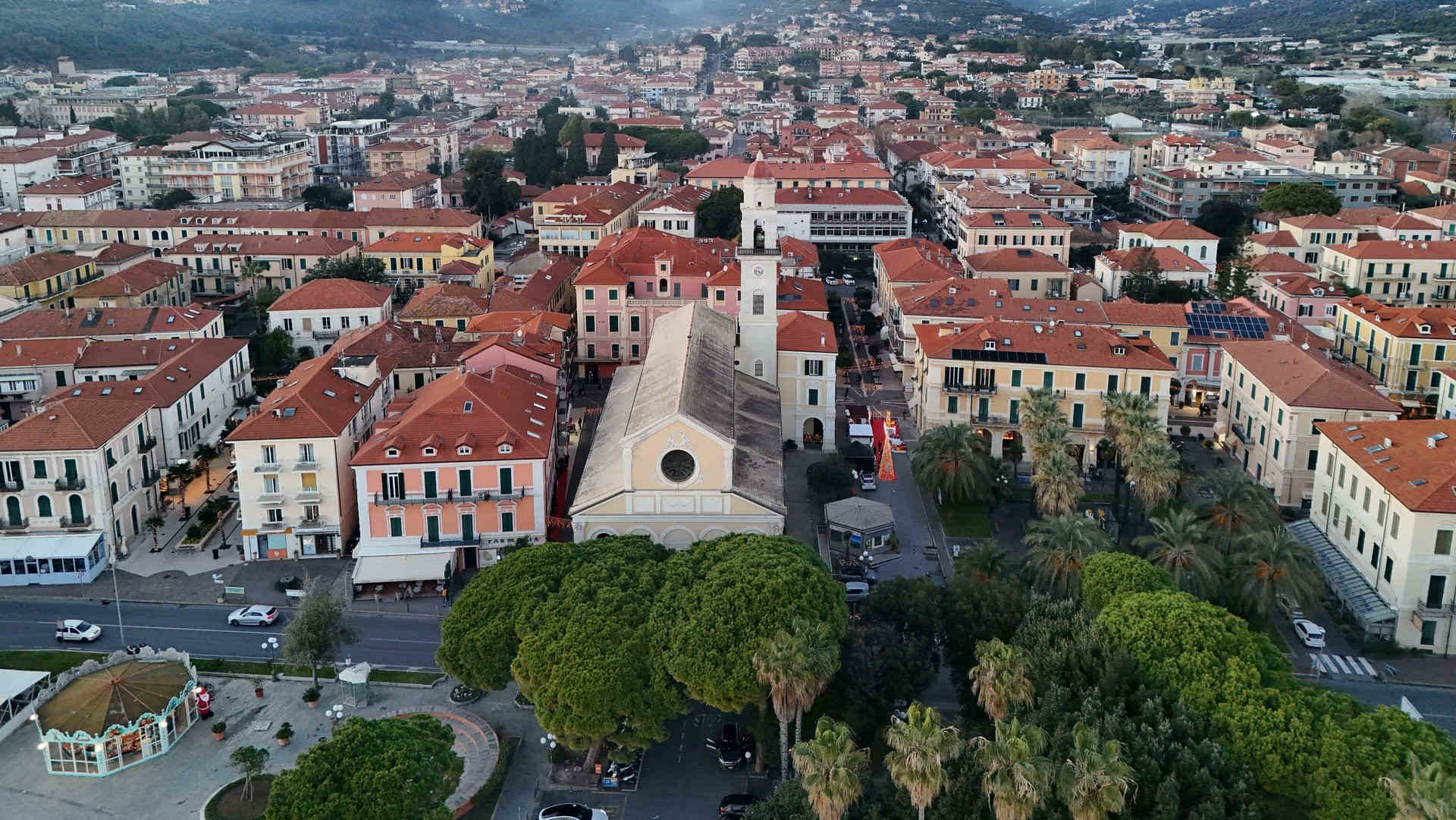
Dianese Gulf Municipalities
Diano Castello: the fortified village of ancient beauty
February 17, 2025
If there is a place capable of enchanting anyone with its timeless charm, it is Diano Castello, a small jewel in western Liguria perched on the hills of the Dianese Gulf. This fortified village, rich in history, traditions and stupendous views, is a true dive into the past, with its narrow caruggi, ancient churches and evidence of its long medieval history. It is not just a place to see, but to experience: here you can stroll unhurriedly, discover hidden corners and savor local delicacies such as olive oil and the famous Vermentino wine.
Whether you are fond of medieval architecture, a lover of good wine, or simply looking for an authentic atmosphere away from the hustle and bustle, Diano Castello has something for you. Read on to find out what to do, what to see and why this village deserves a place of honor among Italy's Most Beautiful Villages.
Diano Castello seen from above
- How to get to Diano Castello and where to stay
- A journey through time: the history of Diano Castello
- The origins of Diano Castello: a refuge against Saracen raids
- The rule of the Marquises of Clavesana and the rise of Genoa
- The Battle of Meloria
- The Communitas Diani: an autonomous commune under Genoa
- Strategic decline and the Modern Age
- What to see in Diano Castello
- The Historic Churches
- Clavesana Square
- Le Lone
- The caruggi and panoramic views
- Diano Castello: the art of the vine and the olive tree
- Olive oil: an art that has been handed down for generations
- Vermentino: a wine that tells the story of the territory
- Events and traditions in Diano Castello: the Vermentino Prize and other events not to be missed
- Perhaps you did not know that...
How to get to Diano Castello and where to stay[ back to menu ]
Reaching Diano Castello is really easy, thanks to its strategic location in the hills of the Dianese Gulf, (Page dedicated to the Dianese Gulf) just a few kilometers from the sea.
If you travel by car, you can take the San Bartolomeo al Mare highway exit on the A10 and follow the signs to the village, which is about 10 minutes away. For those arriving by train, the reference station is Diano Marina, from which you can continue by cab or local public transportation.
If you are looking for a place to sleep to explore the area, then we suggest our farmhouse in Diano Marina. Located a short distance from Diano Castello,we offer authentic hospitality and the convenience of being close to the main attractions of the Dianese Gulf. After a day spent among the medieval alleys and glimpses of the sea, you can relax surrounded by the tranquility of the Ligurian countryside.
From farm to Diano Castello
A journey through time: the history of Diano Castello[ back to menu ]
Delving into the history of Diano Castello means discovering a fascinating past of Saracen raids, powerful feudal lords and alliances with the Republic of Genoa. This small village has managed to keep intact the traces of a distant era, still visible today within its walls and caruggi.
The origins of Diano Castello: a refuge against Saracen raids[ back to menu ]
Although the roots of Diano Castello are uncertain, what we do know is that the earliest evidence dates back to the 10th century, a period marked by frequent raids by Saracen pirates who threatened the coastal villages of Liguria. To protect their families, the inhabitants of the Golfo Dianese decided to take refuge inland, on a strategic hill from which it was possible to spot the dangers coming in from the sea. It was during this period that Castrum Diani was born, a fortified village built with the aim of organizing an effective defense against raids.
The rule of the Marquises of Clavesana and the rise of Genoa[ back to menu ]
The first documented mention of Diano Castello dates back to 1033, when the village was under the control of the Committee of Albenga. In the 11th century, the domain passed to the powerful Marquises of Clavesana, who ruled until the 12th century. However, with the expansion of the Republic of Genoa, the feudal lords were gradually forced to cede their rights. In 1228, the Clavesana family finally sold control of Diano Castello to the “Superba,” marking the end of the feudal era.
The Battle of Meloria[ back to menu ]
One of the most significant historical episodes for Diano Castello occurred in 1284, during the famous Battle of Meloria. An armed galley sent by the Diano community fought alongside Genoa against Pisa, contributing to the victory of the Genoese Republic. This act of courage earned Diano Castello tax relief and the appellation of “magnificent,” a recognition of which the village is still proud today.
The Communitas Diani: an autonomous commune under Genoa[ back to menu ]
During the medieval period, Diano Castello organized itself into a municipal structure known as Communitas Diani, while remaining under the control of Genoa. The village was administered by a Podestà, elected by the city of Genoa, who had administrative, jurisdictional, and military responsibilities. In 1363 the Statutes of Diano Castello were drafted, a code written in Latin that regulated the civil, penal and administrative life of the village.
Strategic decline and the Modern Age[ back to menu ]
As security along the coast increased and maritime trade resumed, Diano Castello's strategic role gradually declined. The population moved to coastal centers, such as Diano Marina, marking a gradual abandonment of the village.
During the 19th century, the village underwent further changes: it became part of the Kingdom of Sardinia after the Congress of Vienna and, in 1861, was annexed to the Kingdom of Italy. In 1887, Diano Castello was hit by a violent earthquake that caused severe structural damage and 32 casualties. For a brief period, from 1923 to 1925, the municipality was merged with that of Diano Marina.
Diano Castello and the Dianese Gulf
What to see in Diano Castello[ back to menu ]
Diano Castello is a place where every corner tells a story. Walking through its caruggi, one discovers traces of medieval life and the events that have marked the village over the centuries.
The Historic Churches[ back to menu ]
The village is home to some fascinating Ligurian churches, such as the Church of St. John the Baptist, with its fine frescoes and Baroque decorations, and the Church of Santa Maria Assunta, dating back to the 12th century, where the austere atmosphere and Romanesque details will take you back in time.

The Parish Church of St. Nicholas of Bari in Diano Castello is a remarkable example of Ligurian Baroque architecture. Its construction, begun in 1699 to plans by architect Giobatta Marvaldi and his son Giacomo Filippo, lasted until 1730. The facade is characterized by pilasters, an elegant cornice, and a curvilinear pediment. Unfortunately, the 1887 earthquake caused the collapse of the roof and the spire of the bell tower, which was never rebuilt. The interior, with a single nave and side chapels, is enriched by polychrome marble altars. Of particular note are the frescoes in the apse basin, by Luigi Morgari, and those in the vault, painted by Raffaele Resio. Prominent among the works of art preserved is an 18th-century wooden crucifix attributed to sculptor Anton Maria Maragliano.

Clavesana Square[ back to menu ]
The beating heart of Diano Castello, this square is surrounded by historic buildings and offers a privileged vantage point from which to admire the village's urban structure. Here, you can take panoramic photos and relax while enjoying the tranquility of the place.

Le Lone[ back to menu ]
The lones of Diano Castello are ancient underground cisterns used in the past to collect and store rainwater, a fundamental resource for daily life in the village. These ingenious and functional structures testify to the technical skill and adaptation of the inhabitants to a hilly terrain where water supply was not always easy.
Excavated in the rock and protected by solid roofs, the lones served not only for domestic use but also to ensure water for crops and animals, especially in times of drought. Their presence was synonymous with self-sufficiency and resilience, indispensable qualities for a medieval community living in such a strategic yet isolated location.
Today, the lones represent a symbol of the profound link between Diano Castello and its past, and allow us to understand an essential aspect of local history, where necessity inspired solutions that still fascinate us today for their simplicity and ingenuity.
The caruggi and panoramic views[ back to menu ]
As you stroll through the caruggi, the narrow, shady alleyways winding between ancient stone houses, you will feel immersed in the authentic medieval atmosphere.
As you climb to the highest points of the village, you will be rewarded with spectacular views of the Dianese Gulf and the surrounding hills. It is the ideal place for a souvenir photo or simply to stop and breathe in the beauty of the landscape.
Historic center of Diano Castello
Diano Castello: the art of the vine and the olive tree[ back to menu ]
Agricultural tradition is an integral part of the identity of Diano Castello, which has been a land of olive groves and vineyards for centuries. The hills surrounding the village, kissed by the mild climate of the Dianese Gulf, offer the ideal terrain for the cultivation of two local excellences: olive oil and Vermentino.
In Diano Castello, the cultivation of vines and olives is more than just an economic activity, but a true art form. Walking among the rows of vines and olive groves, it is possible to perceive the deep bond between the inhabitants and their land, a bond that is renewed every season, respecting an agricultural heritage that represents the soul of the village.
Olive oil: an art that has been handed down for generations[ back to menu ]
Diano Castello's olive groves produce high-quality extra virgin olive oil from local varieties such as Taggiasca. The village's farmers have refined harvesting and pressing techniques over the centuries, maintaining strong ties to tradition. The result is an oil with a delicate flavor, perfect for enhancing the typical dishes of Ligurian cuisine.

Vermentino: a wine that tells the story of the territory[ back to menu ]
Vermentino, a symbol of local enology, finds a perfect habitat in Diano Castello. This fresh and aromatic white wine is the result of careful processing and a deep knowledge of the territory. The combination of limestone soil and sea breezes gives Vermentino a unique character, appreciated both locally and beyond regional borders.
Events and traditions in Diano Castello: the Vermentino Prize and other events not to be missed[ back to menu ]
Diano Castello is a village that lives and celebrates its territory through events and traditions that combine history, culture and food and wine.
Among the most anticipated moments of the year, the Vermentino Award certainly occupies a special place. This event, dedicated to the famous local wine, attracts enthusiasts, producers and curious visitors from all over Italy. During the event, it is possible to taste different Vermentino labels, meet the producers and discover the deep connection between the village and its wine tradition. The tastings, often accompanied by music and performances, make for a truly unique and engaging atmosphere.
In addition to the Vermentino Award, Diano Castello hosts other events that enhance its culture and past. Religious festivals, such as those dedicated to St. John the Baptist, the village's patron saint, offer an opportunity to immerse oneself in spirituality and popular tradition, with processions, celebrations and moments of conviviality in the main square.
Another popular event is the Castrum Diani, a medieval reenactment generally held in September. During this festival, the streets and squares of the village come alive with shows, fights, performances by flag-wavers, musicians and stilt-walkers, offering visitors an authentic plunge into the past.
Diano Castello, the old town seen from above
Perhaps you did not know that...[ back to menu ]
Diano Castello hides curiosities and historical details that make the village even more fascinating. Did you know, for example, that the name “Castrum Diani” comes from Latin and means “fortified place of Diana”? This recalls the Roman cult of the goddess Diana, a possible reference to the ancient origins of the area.
It is then said that some houses in the hamlet have secret passages used in the Middle Ages to move quickly during sieges or to hide valuable goods. Underground in the village are not only the famous lones, but also old cellars dug into the rock, once used to store Vermentino and food during warmer periods.
Did you know that the village's main square was apparently once used as a gathering place for medieval markets? Here olive oil and wine were bartered for goods from the sea.
Finally, few people know that some of the stones in the ancient walls bear engravings that historians believe could be marks left by master stonemasons to “sign” their work or to indicate property boundaries.
Listen to all podcasts published on our official channels:






